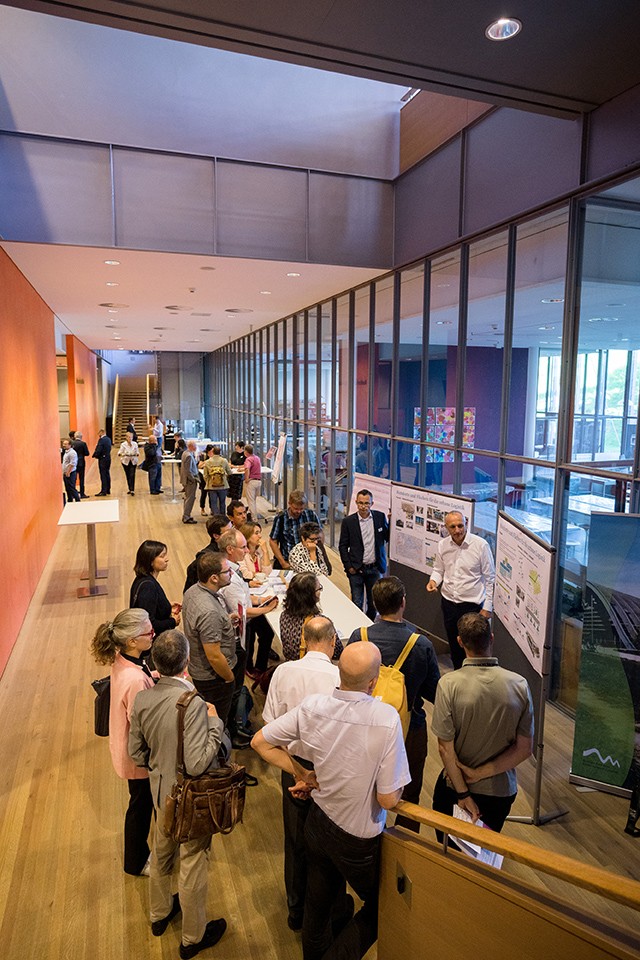
«Mit einer intelligenten Verkehrspolitik in die multimobile Zukunft», lautet der Titel der vom Bundesamt für Raumentwicklung ARE verfassten Medienmitteilung zur ersten Nationalen Mobilitätskonferenz, die Ende August in Bern stattfand. Mit einer Open Session daran teilgenommen haben Miriam Lüdi und Sibylle Wälty. Sie zeigten auf, wieso eine Abstimmung der Siedlungs- und Verkehrsplanung aber unabdingbar ist. Denn: Die Verkehrspolitik kann noch so intelligent sein, ohne eine ebenfalls intelligente Siedlungspolitik wird ihr eine haushälterische Bodennutzung nicht gelingen.
Abstimmung der Siedlungs- und Verkehrsplanung
Bei der Umsetzung der gesetzlich geforderten haushälterischen Bodennutzung übernimmt die Abstimmung der Siedlungs- und Verkehrsplanung eine Schlüsselrolle. Die Verkehrsmittelwahl ist abhängig von der Distanz zu Haltestellen sowie von der Angebotsqualität des öffentlichen Verkehrs. Weitere relevante Faktoren sind Raumnutzungsdichten sowie die möglichst nahe Anordnung von Wohnen und Arbeiten.
Konkret heisst das: Je näher Einwohner und Beschäftigte an einer Haltestelle des öffentlichen Verkehrs (öV) sind und je besser die Angebotsqualität ist, desto weniger Bedeutung hat der motorisierte Individualverkehr (MIV). Wer nahe zum Arbeitsplatz und Versorgungseinrichtungen wohnt, geht eher zu Fuss oder nützt den öffentlichen Verkehr. Eine höhere Wohnraumdichte, insbesondere in kurzer Distanz zu Gebieten mit einem Überhang von Arbeitsstellen und Versorgungseinrichtungen, ist somit eine wirkungsvolle Lenkungsmassnahme. Vor diesem Hintergrund bewirkt eine flächeneffiziente Siedlungs- und Verkehrsplanung auch eine gesündere Mobilität!
Daher gilt: Erst wenn die Rahmenbedingungen für höhere Raumnutzungsdichte und Raumnutzungsausgewogenheit geschaffen und die Angebotsqualität des Fahrradverkehrs verbessert sind, reduziert sich die Abhängigkeit von passiver Mobilität (öV und MIV). Nur dann kann Mobility Pricing zur Unterstützung der haushälterischen Bodennutzung, zusätzlich zur Mehrwertabgabe eingeführt, werden – ohne Wohlfahrtsverlust.
Informationen zur Ersten Nationalen Mobilitätskonferenz sind auf der Tagungswebseite abrufbar.
Sibylle Wälty, dipl. Arch. ETH, MSc Real Estate und CAS RIS/GIS, Doktorandin am ETH Wohnforum – ETH CASE und Miriam Lüdi MLaw, Doktorandin an der Universität Basel forschen seit 2016 im Rahmen des SNF-Forschungsprojekts [Nr. 162718] zur Umsetzung der haushälterischen Bodennutzung